
The best in the sense that Star Trek IV: The Voyage Home gives fans what they want. Media critics and fancy people sneer at fan service because it is catering to the audience without giving proper deference to “the art”. Whatever, I just want to be entertained, and Star Trek IV does that very well.
Star Trek IV focuses on seven popular characters from the original TV series, with opportunities for each character to do what they do best. The photo above has the characters arranged in order of importance, so we start with the back row.
Sulu is a pilot, so is level-headed and not too chatty. He keeps his cool as he accelerates a shabby Klingon spacecraft up to warp 9.8, most of the action takes place in San Francisco, the city of his birth, and he gets to fly a Huey helicopter.
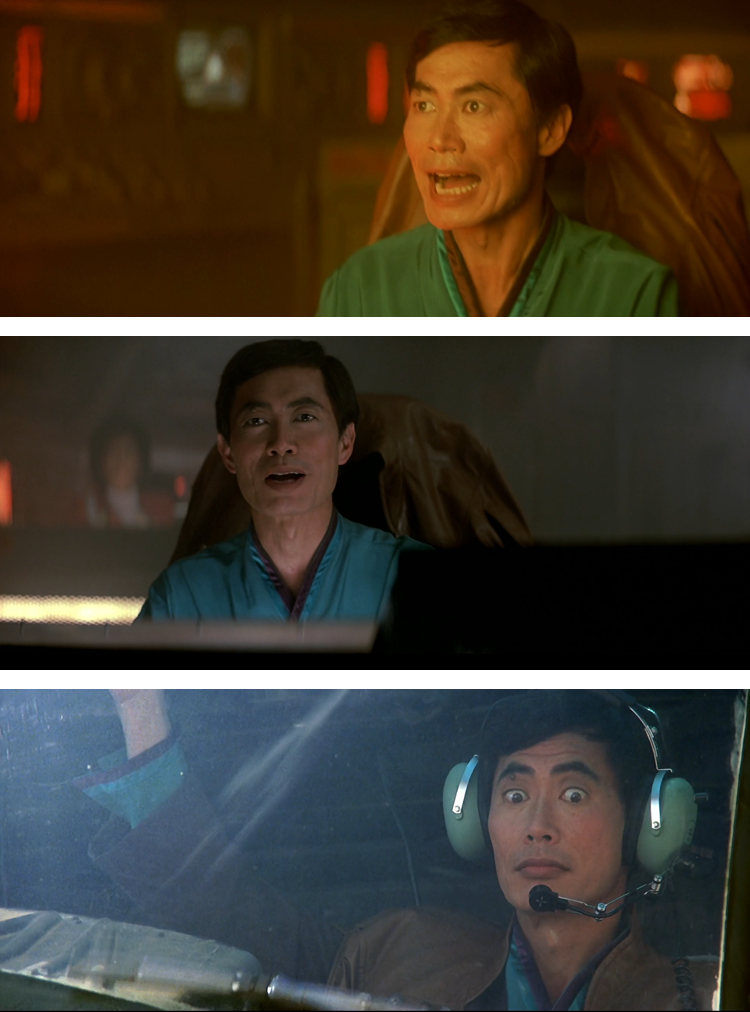
That covers just about everything we knew about Sulu from the original show.
Uhura is a communications officer. In most of the original episodes, she has a minor role. In Star Trek IV, the entire crisis is based upon an alien communication beam that is overwhelming the Earth. Uhura processes the signal to figure out that it’s whale song. Uhura also locates the needed radiation source and monitors terrestrial communication to locate Chekhov when he is apprehended by the military.
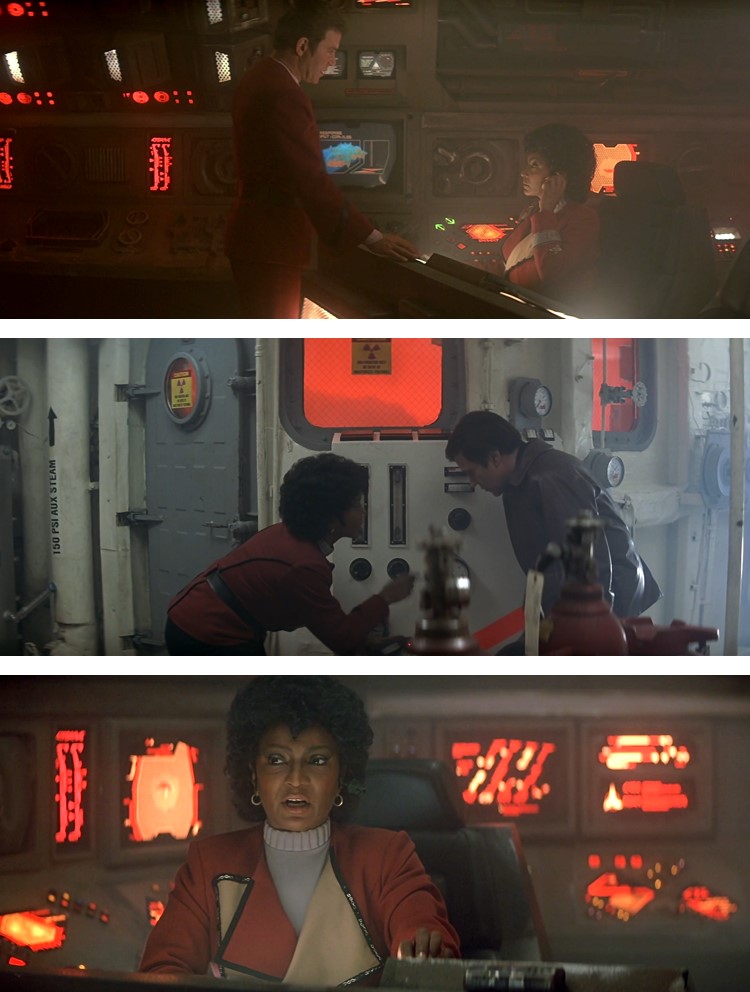
Uhura is critical to the success of the mission and is about as prominent as she has been in any original episode.
Chekov is a navigator and tactical officer, but was primarily cast to be a young, appealing character. In the movie, Chekov lightens the mood by asking random people where he can find a “nuclear wessel”. On the verge of getting captured, he has an amusing bluff and run scene. He was injured after that confrontation, so didn’t have more to do.
McCoy is the passionate doctor intended to balance the logical Mr. Spock. He gets plenty of opportunity to interact with Spock to bicker, correct or explain.
McCoy is committed to healing, and can come off as gruff or high-handed. A part of the plot occurs in a 20th Century hospital, so he has plenty of opportunity to heal and to insult the staff doctors. He casually heals an old lady, and adds, “Kidney dialysis, what is this, the dark ages?” On an elevator, he overhears a couple of doctors, and can’t help admonishing them with, “Unbelievable. Sounds like the god damn Spanish inquisition.” When McCoy interrupts Chekov’s doctor, he remarks, “my God man, drilling holes in his head is not the answer.”
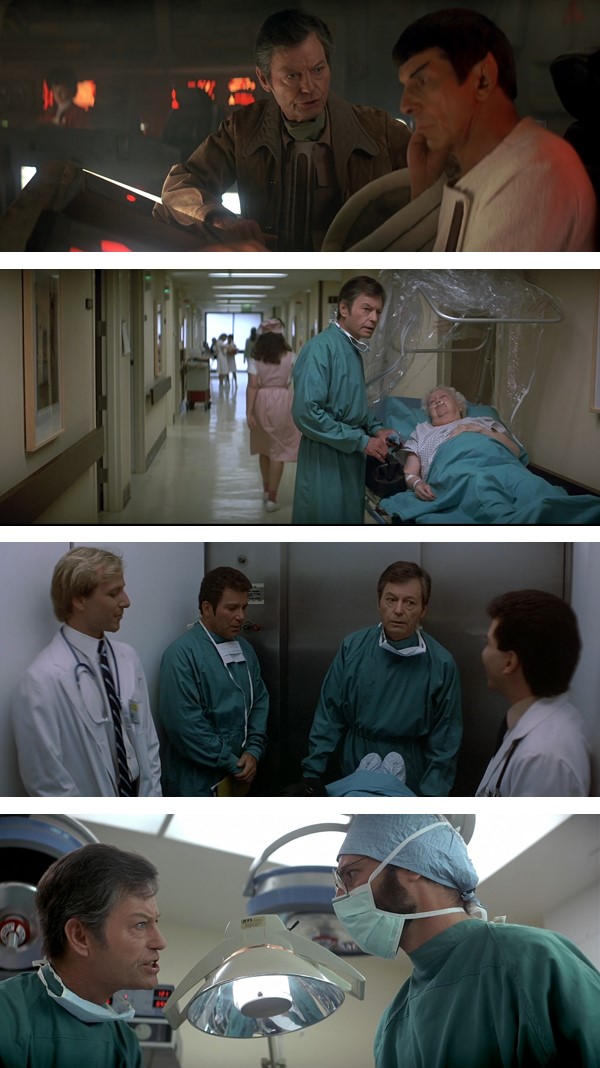
Those are all great cracks that we expect from McCoy. The only quip we didn’t get was a “I’m a doctor, not a [bricklayer, escalator, whatever].”
Scotty is another more prominent character. He is known for being blustery, Scottish and a gifted engineer. Since they are on a decrepit Klingon ship, he has plenty of technical challenges to bluster about and to address. The mission is to transport two whales back to the future, so Scotty needs to interact with 20th Century technology and engineers to modify the Klingon ship to carry whales.
Using a computer, he tries talking into the mouse, then has to use the keyboard to impress a material engineer. After his job is done, he gets a few charming Scottish lines in like, “Admiral, there be whales here” and “The beasties seem happy to see you doctor”.
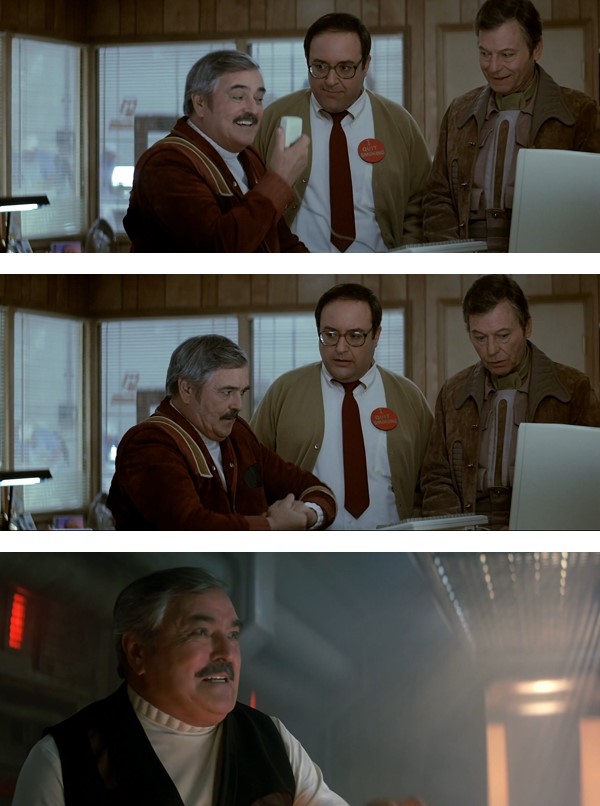
That’s what we want from Scotty. It would be too much to hope for a, “Captain, I kenna do it, we’ve got no power.” Otherwise, he was perfect.
Spock is one of two main characters. He is a human/Vulcan person who strives to be logical. In Star Trek III, Spock was reborn with his old consciousness. I think he is the best of the movie Spocks because he is still learning how to work with humans and lacks experience.
Spock gets an light-hearted opportunity to use his signature move, the Vulcan nerve pinch. Another amusing scene is when he impetuously jumps into a whale tank to have a mind-meld with a whale. He gets to awkwardly try using Earth slang with lines like, “They are not the hell your whales”.
An unexpected bonus was the resolution of longstanding dispute with his father. Spock’s dad admits that he was wrong to object to Spock joining Star Fleet and is impressed with his son’s performance. That tension was present since the original series.
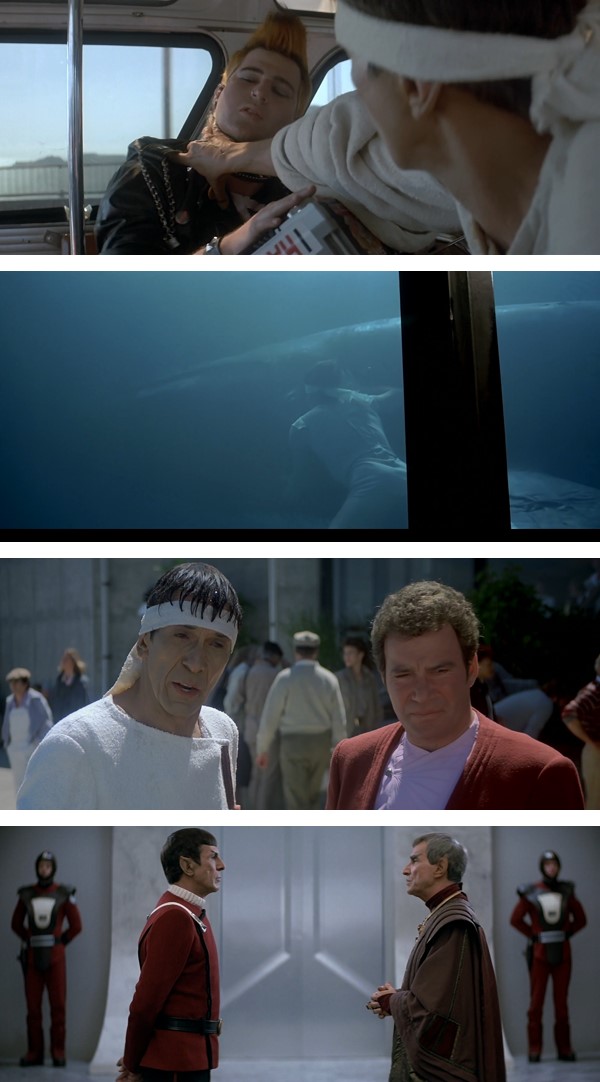
In the original series, Captain Kirk was the primary character, and there would be too many callbacks or references to put in this movie. Wisely, in the movie, the rest of the cast does more that he does. We get enough to satisfy us. Kirk gets the girl, as we’d expect. He gets to take on a heroic act toward the end of the movie. At the end of the movie, a tribunal is held to address infractions from Star Trek III. Everyone is cleared, but Kirk is busted down to captain so he can go back to commanding a star ship. That’s something he wanted, and we want to see in future movies. Kirk as an admiral isn’t as much fun.
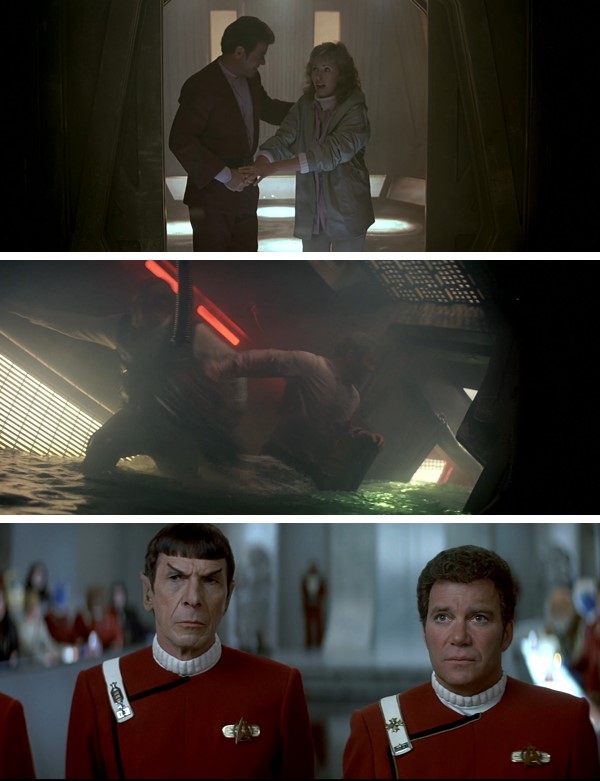
Of the Star Trek movies, this didn’t earn the most or have the highest rank on IMDB. There wasn’t much drama or personal growth. It was just a fun movie for fans of the original Star Trek series.